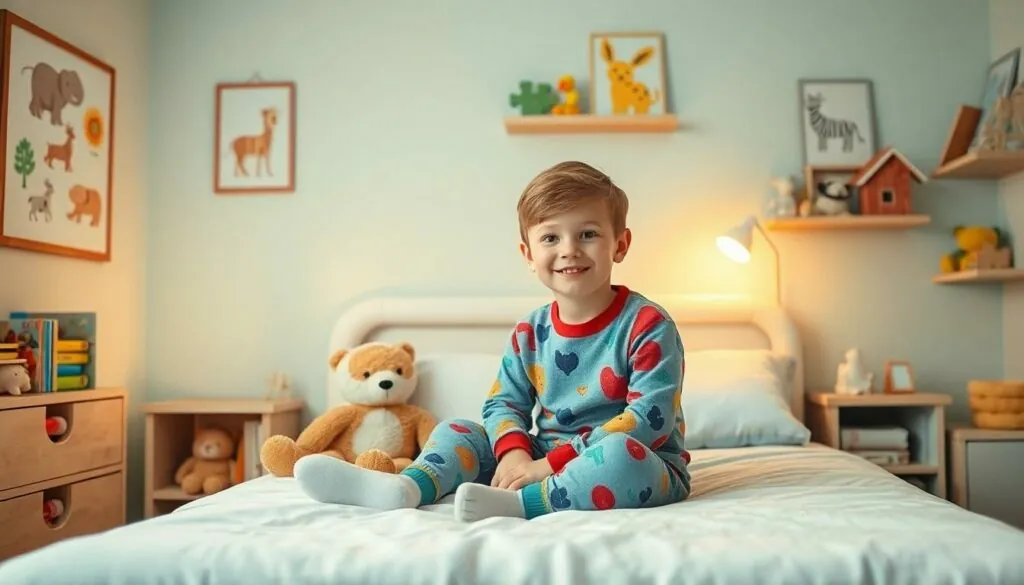Table of Contents
ToggleWhen it comes to kids and sleep, the age-old question arises: when should they start snoozing solo? Parents often find themselves caught between wanting their little ones to gain independence and fearing the spooky shadows lurking in the corners of their minds. After all, who wouldn’t want a peaceful night’s sleep without a tiny foot in their back?
Understanding Sleep Independence
Sleep independence develops when children transition to sleeping alone. Multiple factors influence this transition, including age, maturity, and emotional readiness. Parents often notice when kids start expressing a desire for their own space. As children grow, they may demonstrate increased confidence and reduced nighttime fears.
Research indicates that many kids are ready to sleep alone between ages 5 and 7. Experts suggest that during this period, children often experience improvements in their ability to manage anxiety and feel secure on their own. Observing signs of comfort, such as a child’s willingness to play independently during the day, aids in determining readiness for nighttime sleep.
Environmental factors play a significant role as well. A calm, reassuring bedtime routine fosters an atmosphere where children can feel at ease. Implementing consistent practices, such as reading a book or singing a lullaby, establishes a connection to the sleep environment. Environments that are dark, quiet, and free of distractions contribute to a successful transition.
Parents should assess their child’s unique temperament and comfort level. In cases where children express fear of the dark or separation anxiety, gradual steps may help ease the transition. Allowing kids to choose a favorite stuffed animal or nightlight provides comfort during this adjustment. With patience and understanding, each child can achieve sleep independence at their own pace.
Factors That Influence Sleep Readiness
Several factors impact when children become ready to sleep alone. Emotional development and environmental safety play key roles in this important transition.
Child’s Emotional Development
Emotional readiness varies among children. Generally, kids aged 5 to 7 show increased confidence and reduced anxiety about sleeping alone. A child demonstrating comfort during daytime activities indicates a readiness for nighttime independence. When children express their feelings openly, they may reveal their concerns about the dark or separation. Observing how they cope with various situations helps parents gauge emotional maturity. This maturity often correlates with their ability to handle bedtime without parental presence.
Safety and Comfort in the Sleeping Environment
Creating a secure atmosphere is vital for promoting sleep independence. A well-organized room with familiar items fosters a sense of safety. Comfortable bedding and a calming color scheme contribute to a peaceful space. Parents can enhance safety by ensuring windows and doors are secure and that the environment is free from hazards. Including comfort items, like a favorite stuffed animal or a nightlight, can also ease fears. Maintaining a consistent bedtime routine aids in reinforcing the comfort and safety of the child’s sleeping environment, supporting their overall readiness for sleeping alone.
Guidelines for Different Ages
Determining the right age for kids to sleep alone requires understanding their developmental stages. Here’s a breakdown based on different age groups.
Toddlers (Ages 2-3)
At ages 2 to 3, many toddlers are not ready to sleep alone. Their attachment to parents often leads to increased anxiety during nighttime. Children in this age group frequently benefit from co-sleeping or the close presence of a parent. Signs of readiness may include a desire for independence during the day, such as playing alone. However, most children at this stage still rely on comfort and security from their caregivers during sleep.
Preschoolers (Ages 4-5)
During preschool years, ages 4 to 5, many kids show signs of increased confidence and independence. Children often express interest in sleeping alone, especially if positive reinforcement is involved. Familiar bedtime routines help them feel secure as they transition. Incorporating comforting items, such as stuffed animals, can aid in easing the nighttime fears many preschoolers experience. Readiness at this age varies, but with support, most children can adapt to sleeping independently.
Early School Age (Ages 6-8)
In the early school age range, ages 6 to 8, children commonly demonstrate greater emotional maturity and self-confidence. They may accept sleeping alone more readily, as they become more accustomed to their environments. Consistent routines significantly contribute to their sense of security. Observing a child’s emotional responses during the day can provide insights into vulnerability levels. When children express assurance and comfort, they are often ready to embrace sleeping alone with minimal anxiety.
Signs Your Child Is Ready to Sleep Alone
Observing certain behaviors helps parents identify if their child is ready to sleep alone. Increased confidence marks a significant sign; children showing willingness to explore their environment independently often exhibit a sense of security. Demonstrating comfort during the day, such as playing without parental supervision, further indicates readiness.
Expressing interest in sleeping alone can manifest through conversations about wanting their own space or their excitement over a new bed. Coping well with small challenges also demonstrates emotional maturity, making nights alone less daunting. If a child has learned to self-soothe or can use comforting items like a stuffed animal or favorite blanket, this points to a readiness for independent sleep.
A safe sleeping environment significantly impacts a child’s comfort level. A well-organized room with familiar items creates a sense of belonging, easing nighttime fears. Secured windows and doors add an extra layer of reassurance for both child and parent.
Establishing a consistent bedtime routine plays a critical role in preparing children for sleeping alone. Engaging children in setting up their routine fosters a sense of ownership and responsibility. With a positive and calming atmosphere, parents promote a smoother transition to independent sleep.
Accompanying these signs with appropriate encouragement supports children during this transition period. Each child progresses at a unique pace; patience and observance can significantly facilitate the shift to sleeping alone.
Tips for Transitioning to Independent Sleep
Establishing a bedtime routine significantly supports kids in transitioning to independent sleep. Consistency in timing creates a sense of security while signaling the end of the day. Parents might consider incorporating activities such as reading together or discussing the day’s highlights to foster calmness.
Creating a soothing sleep environment plays a crucial role. A well-organized bedroom equipped with familiar items contributes to feelings of safety. Parents can enhance comfort levels by providing cozy blankets or beloved stuffed animals. Soft lighting, like nightlights, may also help ease fears of the dark.
Encouraging open conversations about feelings regarding sleeping alone is helpful. Parents should invite children to express their concerns, addressing them with reassurance and understanding. Asking children about what makes them feel secure might lead to their involvement in the transition process.
Introducing gradual changes can assist with this adjustment. Parents might let children spend short periods alone in their room before bedtime, gradually increasing the duration. This gradual exposure fosters confidence and eases anxiety.
Reinforcing positive behavior during this transition is vital. Praise for small milestones, such as staying in bed or sharing exciting dreams, boosts a child’s confidence. Offering incentives, like stickers or extra storytime, encourages motivation to maintain good sleep habits.
Tracking progress can provide both parents and children with perspective on how far they’ve come. Keeping a simple chart noting successful nights can serve as a visual reminder of achievements. Sharing these wins encourages a sense of accomplishment.
Maintaining flexibility ensures a compassionate approach. If a child struggles with the transition, providing support rather than pressure proves beneficial. Observations regarding emotional readiness guide parents in adjusting strategies based on each child’s unique pace.
Conclusion
Determining when kids should sleep alone is a personal journey for each family. By recognizing signs of emotional readiness and fostering a supportive environment, parents can help their children transition smoothly into independent sleep. It’s essential to maintain consistent routines and create a comforting space that promotes feelings of safety. With patience and encouragement, parents can empower their children to embrace this new milestone confidently. Ultimately, every child is unique, and understanding their individual needs will guide parents in making the best decision for their family’s sleep dynamics.







